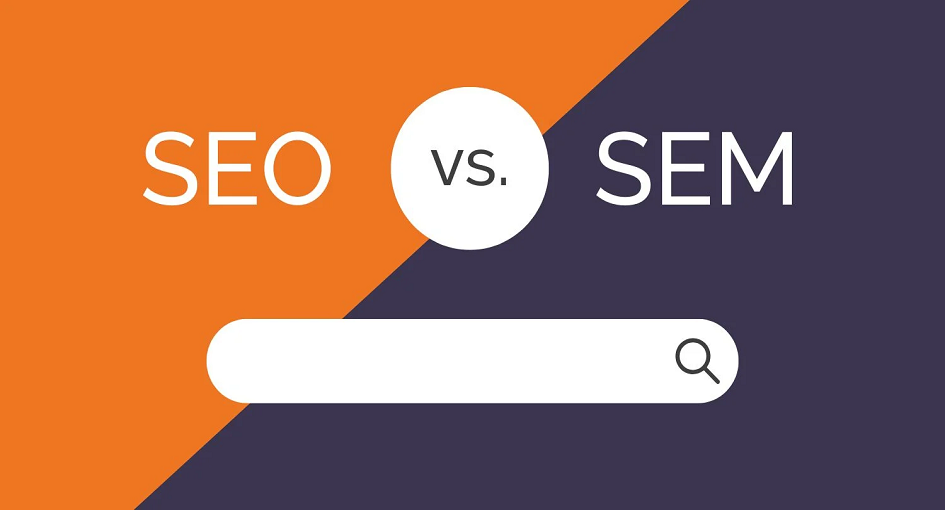
In the ever-evolving landscape of digital marketing, two essential strategies come to the forefront: SEO vs. SEM. While these two approaches share the overarching goal of enhancing a website’s visibility in search engine results, they diverge in their methods and outcomes.
SEO, or Search Engine Optimization, is the art and science of optimizing a website to improve its organic (unpaid) search engine rankings. It encompasses a range of techniques aimed at enhancing various elements of a website, including on-page content, technical aspects, and backlinks. SEO is a gradual and algorithm-dependent approach that focuses on building a website’s authority over time. It emphasizes the creation of high-quality, relevant content that resonates with both users and search engines. By adhering to SEO best practices, websites aim to climb higher in search results, attract organic traffic, and establish themselves as authoritative sources within their respective niches.
SEM, or Search Engine Marketing, encompasses paid strategies for boosting visibility in search engine results. SEM tactics include pay-per-click (PPC) advertising, display ads, and remarketing campaigns. SEM enables businesses to create targeted advertisements that appear prominently at the top of search engine results pages (SERPs) when specific keywords are searched. Unlike SEO, SEM provides immediate visibility, making it a valuable tool for businesses seeking quick results and increased website traffic. However, SEM comes with direct costs, as advertisers pay for each click on their ads.
While both SEO vs. SEM share the goal of improving a website’s online presence, they have distinct characteristics and cater to different needs:
SEO primarily focuses on generating organic traffic, which arises from users’ genuine interest in a website’s content. In contrast, SEM brings in paid traffic through advertisements.
SEO is a cost-effective, long-term strategy with minimal ongoing expenses. SEM, as a paid advertising model, incurs immediate costs with each click.
SEO is a gradual process that requires time to yield significant results. SEM offers immediate visibility and can drive traffic right away.
SEM provides more control over ad placements, keywords, and budget allocation. In contrast, SEO is subject to search engine algorithms and may have limited control over rankings.
SEO is ideal for building a website’s authority, attracting organic traffic, and achieving long-term sustainability. SEM is better suited for businesses seeking rapid visibility, running time-sensitive promotions, or targeting specific demographics.
In practice, many businesses opt for a hybrid approach, leveraging both SEO vs. SEM to maximize their online presence. This hybrid strategy combines the long-term benefits of SEO with the immediate results of SEM, creating a well-rounded digital marketing strategy. Ultimately, the choice between SEO vs. SEM depends on various factors, including budget, timeline, and specific marketing objectives. Businesses can tailor their strategies to align with their unique needs in the competitive digital landscape. Whether prioritizing organic growth or investing in immediate visibility, the synergy between SEO and SEM can propel businesses toward their digital marketing goals.
In conclusion, the dynamic realm of digital marketing offers two fundamental strategies, SEO and SEM, each with its distinct approach and advantages. SEO emphasizes the gradual, organic growth of a website’s visibility through optimization techniques and high-quality content creation. It focuses on building long-term authority and attracting users genuinely interested in the website’s offerings. SEM, on the other hand, leverages paid advertising to secure immediate visibility and drive targeted traffic to a website.
The choice between SEO and SEM depends on several factors, including budget, timeline, and specific marketing objectives. Businesses seeking sustained, long-term growth often prioritize SEO, as it cultivates authority and credibility over time. In contrast, SEM is ideal for businesses with immediate goals, such as promoting time-sensitive offers or targeting specific demographics.
In practice, many successful digital marketing strategies incorporate elements of both SEO and SEM, creating a balanced approach that harnesses the strengths of each. By strategically blending these strategies, businesses can achieve both immediate visibility and long-term sustainability in the competitive online landscape.
Ultimately, the decision between SEO and SEM is not a matter of one being superior to the other but rather a matter of aligning the chosen approach with the unique goals and resources of a business. By understanding the differences and synergies between SEO and SEM, businesses can navigate the digital marketing landscape effectively and make informed decisions to optimize their online presence.